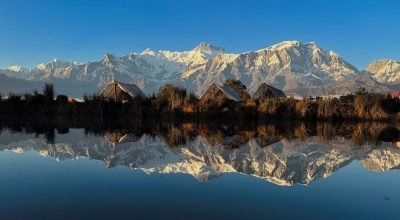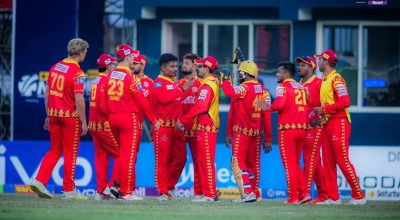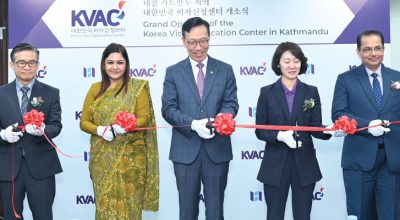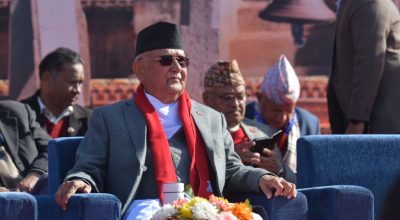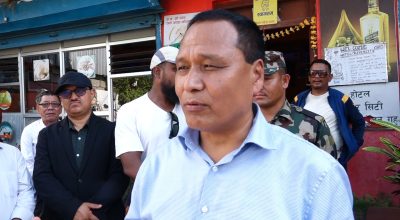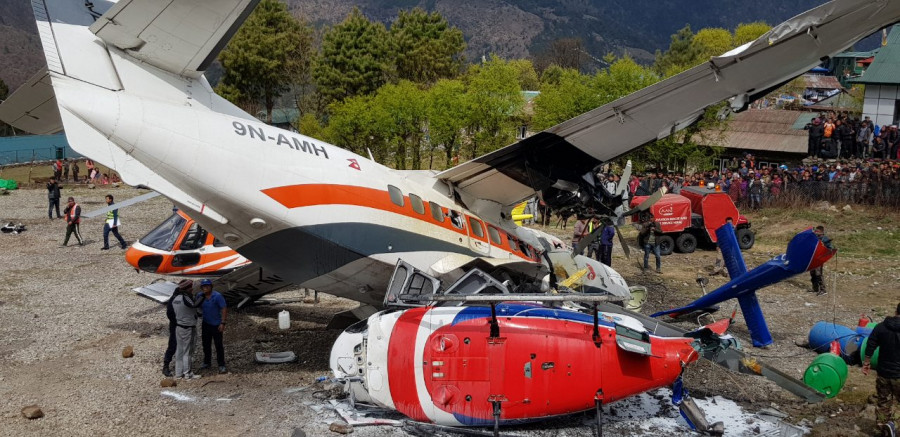
Kathmandu, Sept 15: A preliminary investigation report into the April 14, 2019 crash of a Summit Air aircraft at Lukla airport said the plane veered right during the takeoff roll due to uneven thrust between the two engines.
The LET L-410 slammed into a fence before colliding with two parked helicopters, killing the copilot Sujit Dhungana and two policemen on the ground.
The relatively inexperienced co-pilot had assumed command of the aircraft. The report submitted to Tourism Minister Yogesh Bhattarai concluded that it was an ‘operational error’.
The report, which will be made public after 60 days by incorporating comments from the concerned stakeholders, said that instructor pilot Rabindra Rokaya had given command of the aircraft which carried no passengers to the co-pilot. “It crashed within a fraction of a second. The instructor was not able to correct the plane,” said one of the members of the investigation team.
“This kind of accident would not have happened at other airports. The inexperienced co-pilot and his instructor were unable to correct the plane because of the slope and narrow width of the runway,” he said.
Lukla airport is popular as it is the gateway to Mt Everest. Carved out of a mountain, the runway is 527 metres long and 30 metres wide, and has an 11.7 percent gradient or slope. The airport is situated at an elevation of 2,845 metres. A programme entitled Most Extreme Airports, broadcast on the History Channel in 2010, rated the airport as the most dangerous airport in the world.
The co-pilot had 800 hours of flying experience — 200 hours during the training phase. “Less experienced means he or she would not have the capability to handle an emergency, said another official at the Tourism Ministry who wished to remain anonymous because the investigation has not been completed.
The investigation commission has recommended giving command at any critical airport after the co-pilots become fully qualified. “But this will raise questions about the training aspect of the co-pilots because without assuming command at difficult airports, they cannot become experienced,” he said. “It’s difficult to assess the ‘perfectly trained’ co-pilot as well.”
The Civil Aviation Authority of Nepal requires a co-pilot flying in high-altitude areas to complete additional training — including short takeoff and landing — with an instructor pilot.
A video of the crash showed the aircraft veering off the runway seconds after it began to roll. The plane then rammed into an exterior fence and collided with two parked helicopters belonging to Manang Air and Shree Air.
It was Summit Air’s fourth flight to Manthali Airport in Ramechhap that day where it was scheduled to pick up passengers for Lukla.
The aircraft hit a Manang Air helicopter sitting on the upper helipad with its rotors spinning before smashing into a Shree Air helicopter parked on the lower helipad.
This was the second time a Summit Air aircraft had crashed in Lukla. Two years ago, Flight 409 crashed on its final approach to Lukla, killing two pilots. Summit Air was formerly known as Goma Air.
In 2008, a Yeti Airlines flight crashed while making the final approach and caught fire, killing 18 passengers and crew members. The aircraft’s captain was the only survivor.






